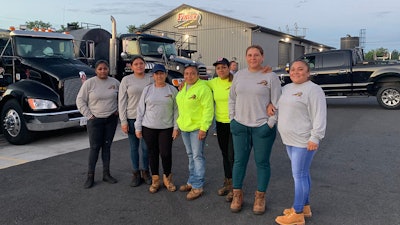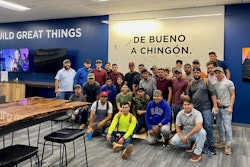
The construction workforce is changing and evolving in many positive ways. Most importantly, it is actively embracing diversity and technology. Despite recent changes, it still remains one of the most male-dominated industries in the world but even this is improving.
According to the BLS, women make up approximately 47 percent of the total workforce in the United States. The Institute for Women’s Policy Research (IWPR) report says that the number of women working in construction increased by 17.6 percent from 2017 to 2018, reaching well over a quarter of a million (276,000). The overall job growth stood at 3.7 percent in all construction occupations as a whole.
Women currently occupy many support roles in the construction industry ranging from administrative assistance to on-site support. As of Dec. 31, 2018, approximately 1,106,919 women were employed in various occupation sectors of the construction industry. While that currently accounts for only 9.9% of U.S. construction workers, which is a relatively small percentage compared to other industries, there were still over 900,000 women workers employed throughout the construction industry (i.e., managerial, professional, administrative, and production employees) in 2018. Of those, approximately 276,000 were employed in production occupations, such as laborers, electricians, plumbers, etc.
Gender Shift
Over the past 30 years, there have been dramatic changes in women’s participation in the U.S. labor force overall. In 1970, about 43 percent of women ages 16 and older were active in the labor force. By 2000, 61 percent of adult women were in the labor force. Over the same period, men’s labor force participation rates declined from 78 percent to 74 percent. These trends are part of broader changes in the labor force that have occurred since the middle of the 20th century. The rapid increase in women’s labor force participation, combined with the simultaneous decline in men’s participation, has closed much of the gender gap in the labor force. In 2000, about 47 percent of people in the labor force were women. If current trends continue, women will soon make up the majority of the U.S. workforce.
Where Are We Headed?
The continued skilled labor shortage continues to be a factor in the way that companies are recruiting and hiring new employees. As this trend continues, more hiring managers are looking to attract and hire a more diverse workforce. Today, construction companies hire women in various roles and responsibilities ranging from trade jobs to heavy machinery operations and construction management.
Numbers are continuing to rise as more and more women are joining the trades. Looking to the future, many see even more opportunities in the industry and enjoy the variety of work and impact it makes.
Opportunities for Women in Construction
The construction industry as we know it today is wide open with opportunities for women. The industry as a whole has one of the lowest gender pay gaps in the United States, with women in construction earning 95% of what their male counterparts earn. This is attractive to potential candidates when considering the average female worker makes 81.1% of what their male colleagues earn.
According to a National Bureau of Economic Research paper, women are more likely to collaborate than men in a team based environment. This is a very important statistic, as construction projects generally require a high level of collaboration and coordinated teamwork. Hiring women increases the likelihood of that much needed teamwork and cooperation, leading to significant improvement in a company’s productivity, efficiency and profits as well as a boost to overall morale.
With changing dynamics, we are seeing more women in construction, smaller pay gaps, and increased opportunities for growth. If you want to get a job in this field, you need to build your skills and knowledge. There are many apprenticeship, scholarship and state-funded programs available today to help more women enter the construction trades.
With more than 15 years in the construction industry serving in a variety of HR leadership roles, and a rooted understanding of the challenges connecting construction employers to potential employees, Brittany Bainum launched Tradeworthy Jobs - an app and web-based platform dedicated to bridging that gap because of construction employers and candidates.


















